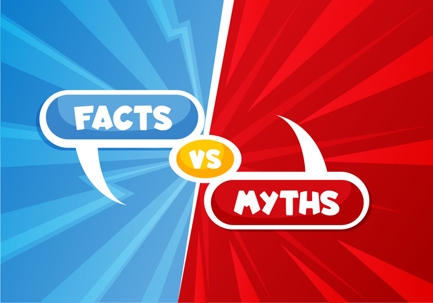There are a lot of plumbing myths floating around the toilet bowl of public sewer and drain knowledge, but today we are going to flush those myths. Here at All County Sewer and Drain, we know everything there is to know about plumbing, so we are counting down and busting eight plumbing myths to share that knowledge with you!
Plumbing Myths
- Toilets flush the other direction in the Southern Hemisphere. There is a grain of truth to this myth. The Coriolis Effect does cause the rotation of hurricanes and cyclones to rotate in opposite directions in the Northern and Southern hemispheres because of the rotation of the Earth. However, drains and toilets are governed by local forces like jets and the exact positioning of your fixtures, not the Coriolis Effect. So while, theoretically, the Coriolis Effect should govern the direction your toilets flush, in practice, this is not true. Myth busted.
- You can safely flush “flushable” wipes. The name “flushable wipes” is a misnomer. You cannot safely flush this product down your toilets without risking clogs. Flushable wipes do not disintegrate like toilet paper, so they will clog your system eventually. Only human excrement, pee, and toilet paper should be flushed down your toilet. Myth busted.
- You should put a brick in your toilet tank to save water and money. There is no evidence that putting a brick in your toilet can help save you money. It can even impede the functioning of your toilet. In order to save water and money, you should buy and install a newer and better performing toilet with the help of All County Sewer and Drain. Myth busted.
- “Minor” leaks can be safely ignored. Ignoring a minor drip in your sink or pipes is a major mistake. Even small drips add up quickly, wasting large amounts of water and money. Taking care of small leaks before they get worse is a great general best practice. Myth busted.
- Drain cleaners are safe and effective. Drain cleaners use harsh chemicals and they can actually be very dangerous to human health and even your pipes. If drain cleaner is breathed in, makes contact with skin, or touches human eyes, it can cause serious injury. The use of a plunger after drain cleaners are used should be avoided because it can lead to splashing dangerous chemicals on yourself. Drain cleaners can also sometimes corrode your pipes. Myth busted.
- Simultaneously flushing every toilet in a skyscraper will cause the building to collapse. Engineers and architects actually take this outlandish idea into account and plan their buildings accordingly. Skyscrapers usually have multiple plumbing systems in order to reduce the possibility of failure. If every toilet in a major skyscraper were flushed simultaneously, one of its several tanks would be stressed, likely resulting in weak flushes, but the building as a whole would be unharmed. Myth busted.
- The pipes in your home will only freeze if the heat is turned off or your furnace fails. Unfortunately, even if your heat is working correctly, some of your pipes may still be in danger of freezing and bursting. Pipes in areas with less insulation, along exterior walls, or in areas like basements and attics can freeze even if the heat is functional. Burst pipes can cause serious water damage, so it’s a good idea to keep an eye on your pipes throughout the winter. If your pipes do burst, be sure to call All County Sewer and Drain for assistance. Myth busted.
- Hot water prevents clogs. Hot water does melt grease as it goes down the drain, but this grease will still cool in your pipes and turn into clogs anyway. Grease in your pipes traps food, hair, and other debris which eventually creates a clog. The clog will also be too deep in your pipes to be reached by a household drain snake, so you will have to call a professional to deal with the problem eventually. Myth busted. One plumbing FACT is that All County Sewer and Drain can help you with all of your sewer and drain needs. If you are having plumbing problems, reach out today!
The post Busting Common Plumbing Myths appeared first on All County Sewer & Drain Inc.

